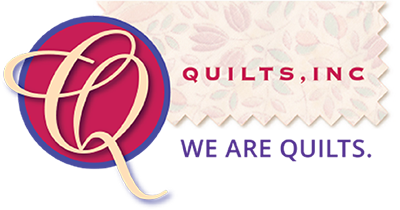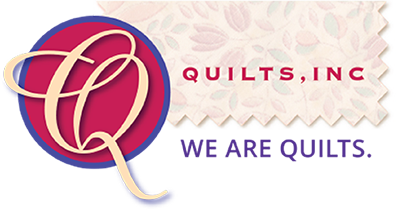Note: This continuing series reposts some of the most memorable columns of Suzy’s Fancy, which ran from 2009-2020. This piece originally ran in 2010.
Mary Koval knows more about antique fabric than most of us will ever hope to learn. A lifelong seamstress, self-taught quilter, and fabric designer who deals in antique quilts and vintage fabrics, Mary has had an enduring relationship with textiles. The self-avowed “fabriholic” has been especially interested in antique fabric for nearly 40 years.

holding a piece of one of her reproduction lines. Photo by Ken Sepeda.
Mary is a California native who moved to Pennsylvania with her husband, Joe, in the early 1970s. She learned to quilt by reading a book borrowed from her children’s babysitter. As she accompanied Joe—an antique furniture dealer—on a buying trip, her newfound interest in quilts was piqued when she saw a beautiful old quilt for sale for “next to nothing.”
Mary purchased that quilt and when it later sold for a good profit, she began buying more. It wasn’t long before the antique quilts were bringing in more money than the antique furniture. Mary’s business, Mary Koval’s Antique Quilts, was up and running.
She began buying vintage fabric in order to make necessary repairs to her antique quilts, using fabrics from the same eras as the quilts. As her collection of old fabric threatened to take over, Joe—in self-defense—told her that she needed to get rid of some of it. When Mary started taking the fabric with her to quilt shows, she discovered that the stock would sell out, as many fabric designers sought out the old cloth for inspiration in making reproduction lines.
One year, at the Quilt Festival in Houston, while helping a designer sort through the stock for sale, and she quickly selected a group of related fabrics for the designer to consider.
“Do you realize that you’ve just put together a reproduction fabric collection?” the designer asked her. “You know all about antique fabrics, Mary. Why don’t you start designing a line of your own?” And so she did. Since that time, Mary has designed reproduction collections for Windham, Timeless Treasures, FreeSpirit, and Blank Quilting fabric manufacturers, among others.

Asked when the first reproduction fabrics were made, Mary laughingly responds, “Oh, back around 1400 or so!” She goes on to explain that virtually all fabrics could be called “reproduction” because the designs all came from something earlier. To illustrate her point, Mary describes a toile design fabric that was first printed in 1783, then again in 1820, in 1860, in 1900, in 1940, and in 1960. Although different manufacturers produced the fabric through the centuries, the design was exactly the same each time.
It is legal to reproduce a copyrighted fabric design as long as the original is used for inspiration rather than directly copied. If the design is changed by 35%, it is considered to be a new work. How that 35% is determined is a bit of a grey area, but examples might include changing the background color, adding a swirl, removing a flower, and so on.
If no copyright exists, it is legal to copy the design entirely. Of course, many old fabric designs, including most calicoes, were never copyrighted to begin with. Others have had their copyright expire and therefore considered to be in the public domain, free to copy.
“Interest in old fabric designs seems to come in 20-year cycles,” says Mary. “A lot of people are fascinated by history these days, and I think that helps drive the current popularity of reproduction lines. But I can go into any quilt shop today and show you fabric that is, technically, a reproduction, even though it isn’t labeled as such. There’s really nothing new!”



